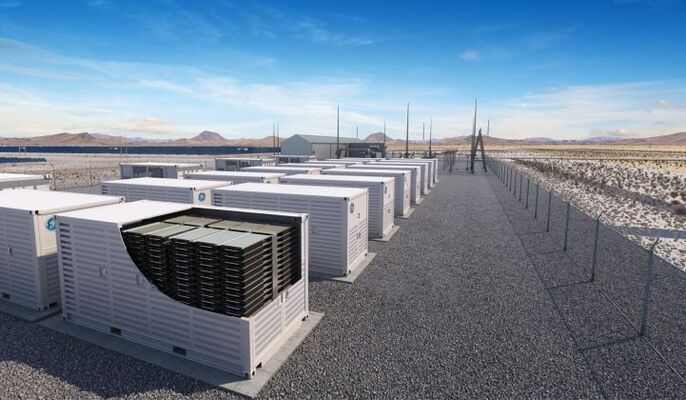Fortescue Metals Group Commissions Two Battery Storage systems In Western Australia

Fortescue Metals Group Commissions Two Battery Storage systems In Western Australia
Two Battery Energy Storage System (BESS) facilities, which will charge from a 150MW solar PV power plant, have been commissioned in the mineral deposit-rich Pilbara region of Western Australia. Renewable energy company Hybrid Systems Australia, a subsidiary of power producer Pacific Energy, completed the interconnected facilities for Fortescue Metals Group, a leading iron ore mining company. The two BESS systems add up to 42MW of output and are part of a wider project called Pilbara Energy Connect, which aims to build new renewables, energy storage, and transmission lines, as well as natural gas generation, to power Fortescue's Iron Bridge Magnetite mine.
Reducing Gas Consumption
The two BESS facilities will reduce Fortescue's reliance on natural gas, which is the primary fuel used at mining operations in the region. The BESS systems use equipment and components supplied by Hitachi Energy and cell manufacturer Kokam, while power control engineering firm MVLV designed, manufactured, and installed the switchgear and BESS enclosures, and BESS control systems came from Digital Intelligence, a company acquired by Pacific Energy in 2020.
FMG's Renewable Energy Commitment
Fortescue Metals Group (FMG) committed AU$700 million (US$483 million) to the project in 2020. CEO Elizabeth Gaines said the infrastructure installed through the project would allow for large-scale solar and wind to be added "at any point on the integrated network," which means FMG could increase its share of renewables powering the mine. FMG executive chairman and founder Andrew "Twiggy" Forrest has been increasingly bullish on the potential for renewable energy to decarbonise the group's operations.
Rio Tinto and BHP's Renewable Projects
Fortescue is not alone in its commitment to renewable electrification of mining power in the Pilbara region. In November 2022, Rio Tinto announced plans to invest around US$400 million in 200MW of solar PV and 200MWh of BESS to add to an existing 34MW of PV it has deployed for its iron ore mines, which will come online by 2026. In September, BHP contracted with utility company Alinta Energy for 45MW of solar PV and 35MW BESS at its port facilities in Western Australia, connected to the company's Pilbara mining operations. BHP alone accounts for about 300 million tonnes of iron ore coming out of the region each year.
Uaroo Renewable Energy Hub
Fortescue has other clean energy projects in development, such as the Uaroo Renewable Energy Hub, where it aims to build a combined 5.4GW of wind and solar PV generation together with about 9GWh of battery storage.
Battery storage is crucial to mining operations as it helps to reduce the reliance on fossil fuels, improve energy security and reduce operational costs. Mining companies consume large amounts of energy, and many operations are situated in remote locations where access to the grid is limited or non-existent. This makes battery storage a valuable resource as it enables mining companies to store energy generated from renewable sources like solar and wind, and use it when needed, reducing the need for diesel generators.
Moreover, battery storage can provide a stable and reliable source of power to mining operations, reducing the risk of power outages and improving energy security. This is particularly important in remote areas where grid infrastructure is limited and power outages can have severe consequences, such as lost production and damage to equipment.
Finally, battery storage can also help mining companies to reduce their operational costs by optimising energy use, reducing peak demand charges and avoiding grid connection costs. This makes battery storage an attractive investment for mining companies, as it not only helps to improve their environmental performance but also their bottom line.
